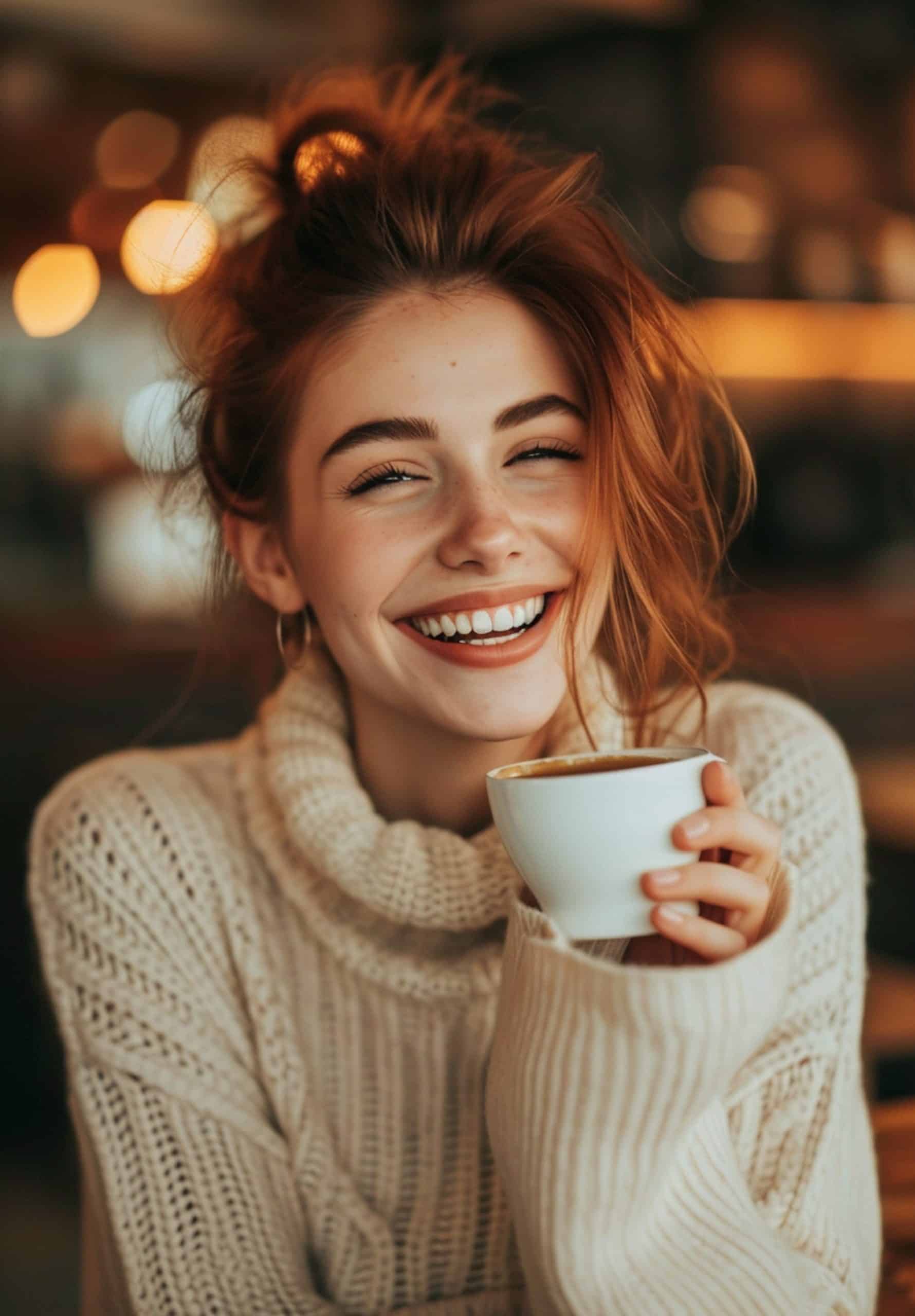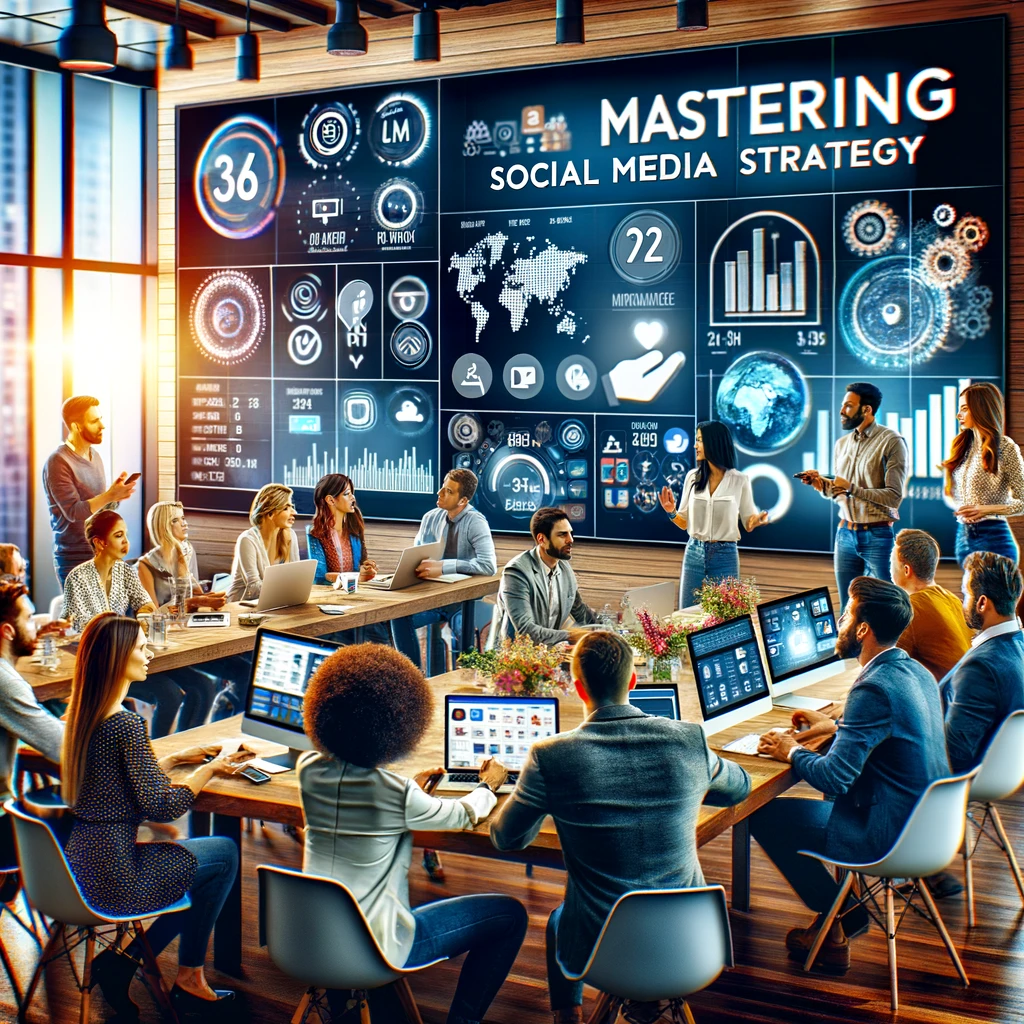WEEKLY WISDOM SERIES – WEEK 3
Mastering PPC Advertising
Welcome back to our Weekly Wisdom series! This week, we’re diving into the dynamic world of Pay-Per-Click (PPC) advertising. Whether you’re a budding entrepreneur or a seasoned marketer, understanding the ins and outs of PPC can transform your approach to digital marketing. So, grab your cuppa, and let’s explore how to make PPC work for you.
Understanding PPC Advertising
Pay-Per-Click, or PPC for short, is an indispensable tool in the digital marketer’s arsenal. It allows you to place ads across various online platforms, paying only when a user actually clicks on your ad. This model offers the distinct advantage of ensuring that your advertising budget is spent on actual potential leads rather than just views.
How Does PPC Work?
At its core, PPC is a bidding system where advertisers compete for space on platforms such as Google Ads, Bing Ads, and social media sites like Facebook and LinkedIn. You decide how much you’re willing to pay each time someone clicks on your ad, which is influenced by how much competition there is for your chosen keywords. The beauty of PPC is its directness and immediacy; you can launch a campaign today and start seeing results within hours.
Why Use PPC?
PPC advertising stands out for its scalability and measurability. Whether you’re a small startup or a large enterprise, you can tailor your campaigns to fit your budget while precisely measuring their effectiveness. PPC campaigns provide detailed data on how many people are clicking on your ads, what it’s costing you, and what actions they are taking after clicking, enabling a clear calculation of your return on investment (ROI).
- Immediate Results: Unlike SEO, which can take time, PPC can drive traffic instantly.
- Targeted Reach: Tailor your ads to specific demographics, locations, and times of day.
- Budget Control: Set a budget that fits your needs, whether you’re a small startup or a large corporation.
- Measurable ROI: Get detailed analytics to measure the success of your campaigns.
Setting Campaign Goals
Establishing clear, measurable goals is the cornerstone of any successful PPC campaign. Before you even begin crafting your ads or choosing your keywords, it’s vital to define what you actually want to achieve. This clarity will guide every decision you make, from selecting the right platform to determining your budget and beyond.
Identifying Your Objectives
Your campaign objectives can vary widely depending on your business needs, but they typically fall into one of these categories:
- Increasing Traffic: If your main aim is to boost the number of visitors to your website, your PPC campaign should focus on driving clicks. This objective is common for new websites looking to establish an online presence or for businesses promoting blog content to enhance engagement.
- Generating Leads: For many businesses, especially in the B2B sector, the goal of a PPC campaign is to generate leads. This could mean encouraging potential customers to fill out a contact form, sign up for a webinar, or download a white paper. The success of these campaigns is measured by how effectively the ads convert clicks into leads.
- Boosting Sales: E-commerce sites often use PPC campaigns with the direct goal of increasing sales. This involves not just driving traffic, but driving qualified traffic that is likely to make a purchase. Ads may target specific products or special offers and are tailored to capture the transactional intent.
- Enhancing Brand Awareness: Sometimes, the goal is less about immediate sales or leads and more about getting your brand name out there. Branding campaigns might focus on broader keywords and aim to maximize impressions rather than clicks. This strategy is particularly useful for new products or services that need to build market presence.
Setting Smart Goals

To ensure the effectiveness of your PPC efforts, your goals should be SMART. Here’s how to apply this principle:
- Specific: Clearly define what you want to achieve. Instead of “increase traffic,” aim for “increase traffic by 30% in three months.”
- Measurable: Make sure you can track your progress with metrics, such as the number of clicks, impressions, conversion rates, etc.
- Achievable: Set realistic expectations based on your budget and market conditions.
- Relevant: Align your PPC goals with your overall marketing and business objectives.
- Time-bound: Set a deadline for achieving your goals to keep your campaign focused and driven.
By setting well-defined goals at the outset, you’ll be able to tailor your PPC campaign more effectively and measure its success more accurately. This step is essential, as it not only influences your approach to bidding and budgeting but also helps you determine the success or need for adjustment as your campaign progresses.
Choosing the Right PPC Platform
Selecting the most appropriate PPC platform is critical to the success of your campaign. Each platform offers unique features and reaches different audiences, so understanding the nuances of each is essential. Here’s a guide to help you navigate this decision:
Google Ads https://ads.google.com
Overview: Google Ads is the most popular PPC platform due to Google’s extensive search engine market share. It allows advertisers to display ads in search results and across its network of sites. Best For: Campaigns that target individuals actively searching for specific products or services. Ideal for both increasing traffic and driving conversions due to high user intent. When to Use: Use Google Ads when your goal is to capture demand where there is already an awareness and intent to purchase or learn more about your type of products or services.
Bing Ads https://ads.microsoft.com
Overview: Bing Ads (now Microsoft Advertising) offers a similar service to Google but with less competition and often lower cost per click. It reaches users across the Bing and Yahoo networks. Best For: Targeting an older demographic or reaching audiences in specific regions where Bing has a stronger presence. When to Use: Opt for Bing Ads if you’re targeting demographics prevalent on Bing or if you want to extend the reach of a successful Google Ads campaign at a potentially lower cost.
Facebook Ads https://www.facebook.com/business/ads
Overview: Facebook Ads provide robust targeting options based on user demographics, interests, and behaviors, making it highly effective for tailored marketing efforts. Best For: Building brand awareness, promoting social engagement, and targeting specific lifestyles or interests. It’s also effective for retargeting campaigns due to the vast amount of data Facebook holds on its users. When to Use: This platform is ideal when you want to create demand or when your campaign aims are more aligned with engaging a specific audience or driving specific actions like app downloads or event registrations.
LinkedIn Ads https://business.linkedin.com/marketing-solutions/ads
Overview: LinkedIn Ads specialises in B2B marketing, offering targeted advertising based on professional criteria such as industry, job title, and seniority. Best For: Lead generation and brand building in the B2B space. It’s particularly effective for targeting decision-makers and professionals. When to Use: Choose LinkedIn when your target audience is professionals or businesses, or when you’re promoting industry-specific content like white papers, courses, or professional services.
Assessing Your Needs
When choosing a PPC platform, consider the following:
- Target Audience: Where does your target audience spend most of their online time? What platforms are they likely to use when considering products or services like yours?
- Budget: Different platforms can vary significantly in cost. Consider your budget and the average cost per click or impression on each platform.
- Ad Formats: Some platforms offer unique ad formats that might be more suitable for your message. For example, if visual ads are key, Instagram and Pinterest could be ideal.
- Objectives Alignment: Ensure the platform’s strengths align with your campaign goals. If direct sales are your primary aim, Google Ads might be best; for awareness and engagement, Facebook or LinkedIn could be more appropriate.
By carefully considering these aspects, you can choose a PPC platform that not only fits your marketing strategy but also maximises your chances of achieving your campaign objectives effectively. Each platform has its strengths, and the right one for you depends on your specific needs and goals.
Keyword Research and Selection
Mastering keyword research and selection is fundamental to the success of any PPC campaign. This process not only influences the reach and effectiveness of your ads but also directly impacts your budget and overall campaign performance. Here’s how to approach this critical component:
Techniques for Effective Keyword Research
The art of keyword research lies in understanding exactly what potential customers are searching for when they’re looking to solve a problem, fulfill a need, or make a purchase. Begin by brainstorming the obvious keywords related to your products or services and then expand this list using the following techniques:
Think from the Customer’s Perspective: Consider the language and terms your customers might use rather than industry jargon.
Use Keyword Research Tools: Tools like Google’s Keyword Planner help you expand your keyword list by suggesting related terms, showing historical search data, and providing insights into the competitive landscape.
Analyse Competitors: Look at which keywords your competitors are targeting. This can give you insights into effective keywords you might have overlooked.
Tools and Resources for Finding the Right Keywords
Several tools can assist in discovering and evaluating the right keywords:
Google Keyword Planner: This is a staple in any PPC strategist’s toolkit, offering data on search volume and competition.
SEMrush: Provides comprehensive keyword data, including variations, competition levels, and related ad spend.
Ahrefs: Known for its detailed keyword reports and insights into search traffic and ranking difficulty.
Ubersuggest: A user-friendly tool that provides keyword suggestions and insights based on actual Google data.
Tips for Using Match Types and Negative Keywords
Understanding and utilising keyword match types allows you to fine-tune which searches trigger your ads. There are three main types of match types:
Broad Match: This is the default setting that reaches the widest audience. It allows your ad to show for searches that include misspellings, synonyms, related searches, and other relevant variations.
Phrase Match: Offers more control, triggering your ads only when the search includes the phrase or similar phrases with the same underlying intent.
Exact Match: The most restrictive, showing your ads only when the search matches the exact keyword phrase (or close variation) without any extra words before, after, or in between.
Negative keywords are equally important as they prevent your ads from appearing in searches that aren’t relevant to your business, helping to reduce wasted spend and improve campaign focus. For instance, if you sell luxury furniture, you might want to add “cheap” or “free” as negative keywords to ensure your ads don’t appear in such searches.
By carefully selecting keywords, utilising appropriate match types, and integrating negative keywords, you can significantly enhance the precision and efficiency of your PPC campaigns. This not only improves your ad relevance and click-through rates but also ensures a better return on your advertising investment.
Ad Creation and Optimisation
Creating compelling and effective ads is crucial for the success of your PPC campaigns. The quality of your ad copy and visuals directly impacts both click-through rates and overall campaign performance. Here’s how to craft ads that not only capture attention but also drive action.
Best Practices for Designing Compelling Ad Copy and Visuals
The right combination of text and imagery can dramatically enhance the effectiveness of your ads. Here are some best practices:
Headlines: Make sure your headlines are clear, engaging, and directly related to the keywords you are targeting. A good headline should grab attention and make the reader want to know more.
Visuals: Use high-quality images or graphics that are relevant to your ad copy. Visuals should complement the message and not distract from it. Ensure that any text on images is legible and that the images are optimised for fast loading.
Call to Action (CTA): Your CTA should be strong and clear. Tell the users exactly what you want them to do, such as “Buy Now,” “Learn More,” or “Sign Up Today.” Make sure the CTA stands out visually from the rest of the ad.

Guidelines for Creating Responsive and Targeted Ads
Responsive and well-targeted ads improve user engagement and campaign performance:
Responsive Design: Ensure that your ads perform well across different devices, especially mobiles. Most platforms like Google and Facebook provide tools to preview and adjust how your ads look on various devices.
Audience Targeting: Tailor your ads to the interests and behaviours of your target audience. Use the targeting tools available on the ad platforms to define who will see your ads based on factors such as demographics, interests, location, and more.

Importance of A/B Testing and How to Implement It Effectively
A/B testing, or split testing, is vital for optimizing PPC campaigns. It allows you to compare different versions of your ads to see which performs better. Here’s how to implement A/B testing effectively:
Test One Element at a Time: Whether it’s the headline, graphic, or call to action, change only one element at a time. This helps you pinpoint exactly what influences the performance changes.
Use Sufficient Sample Size: Make sure your test runs long enough to collect enough data to make statistically significant decisions. This often means waiting until each variant of your ad has garnered a substantial number of impressions and clicks.
Analyse Results and Scale: After the test period, analyse the results to see which version of the ad performed better. Apply these insights to future ads and consider scaling up the better-performing ad.
By focusing on crafting high-quality, responsive, and targeted ads, and continuously optimising through A/B testing, you can significantly enhance the impact and efficiency of your PPC campaigns. This approach not only improves engagement and conversions but also ensures your ad spend yields the highest possible return.

Well done, it’s quite intense but valuable info. We’re half way through so you might want to go and pop the kettle on!
Ready? Ok let’s carry on…
Cost-Per-Click (CPC): You pay each time someone clicks on your ad. This is ideal for driving traffic to your website and works well when your goal is to generate direct responses or actions from users.
Cost-Per-Mille (CPM): This strategy charges you per thousand impressions your ad receives. It’s most suitable for campaigns focused on increasing brand awareness where the goal is visibility rather than direct interaction.
Cost-Per-Acquisition (CPA): You pay for an ad only when an action, such as a sale or signup, is completed. CPA is valuable for campaigns where conversions are the end goal, ensuring you pay only for results. The strategy is not available on all campaign types.
Automated Bidding: Allows the platform’s algorithms to adjust your bids in real-time to achieve the best results based on your campaign goals. It’s particularly useful if you have clear conversion tracking and want to maximise results without micromanaging every aspect. Automated bidding is recommended when you have enough data for the algorithms to learn from, typically after the campaign has been running for some time. If you implement these at the onset of a campaign, they tend to struggle to get going.
Manual Bidding: Gives you control over bid amounts for different ad groups and keywords. This is beneficial when you have a strong understanding of the market and your campaign’s performance nuances. It’s also useful in early stages of a campaign when you might not have enough conversion data for effective automated bidding.
Target Return on Ad Spend (ROAS): This strategy focuses on achieving a specific return on ad spend. You set a target ROAS, and the bidding system adjusts to meet your profitability goals. It’s ideal for businesses with specific profit margins and where the value of conversions can be precisely calculated.
Target Cost-Per-Acquisition (TCPA): Similar to CPA, TCPA lets you specify the target cost per acquisition, with the platform adjusting bids to try to meet your target CPA efficiently. This is useful for maintaining budget control while driving conversions.
Target Return on Ad Spend (ROAS): This strategy focuses on achieving a specific return on ad spend. You set a target ROAS, and the bidding system adjusts to meet your profitability goals. It’s ideal for businesses with specific profit margins and where the value of conversions can be precisely calculated.
Target Cost-Per-Acquisition (TCPA): Similar to CPA, TCPA lets you specify the target cost per acquisition, with the platform adjusting bids to try to meet your target CPA efficiently. This is useful for maintaining budget control while driving conversions.
Demographic Targeting: This involves segmenting your audience based on age, gender, occupation, education level, and other similar characteristics. By tailoring your ads to specific demographic groups, you can increase the relevance and appeal of your messaging.
Geographic Targeting: Geographic targeting allows you to customise your ad campaigns based on the location of your audience. Whether it’s country-level targeting or as precise as targeting specific postcodes, geographic information can help you tailor your campaigns to local preferences, seasonal trends, and regional promotions.
Psychographic Targeting: This type of targeting focuses on the attitudes, interests, lifestyles, and values of your audience. Psychographic information can be incredibly useful for crafting messages that resonate on a deeper level with potential customers.

Layered Targeting Strategies: Combine demographic, geographic, and psychographic data to create highly targeted ad groups. This allows you to address the specific needs and preferences of a well-defined audience segment, increasing the likelihood of engagement and conversion.
Use of Audience Insights: Most advertising platforms offer tools to analyse the characteristics and behaviours of your audience. Utilise these insights to refine your targeting strategies continuously. For instance, if you notice that a particular demographic segment is performing exceptionally well, you might consider increasing your focus on this group or exploring similar segments.
Retargeting and Remarketing: Engage users who have previously interacted with your brand but did not convert. By using retargeting techniques, you can serve tailored ads based on their past interactions, significantly increasing the chances of conversion. This strategy ensures that your ads reach individuals who have already shown interest in your products or services.
A/B Testing: Regularly test different targeting strategies to find what works best for your campaigns. For example, you could run two versions of your campaign, each targeting a different demographic group or using different psychographic criteria, to determine which yields better results.
Click-Through Rate (CTR): This metric shows how well your ads are capturing the audience’s attention. A higher CTR generally means your ads are relevant and engaging.
Cost-Per-Click (CPC): Monitoring CPC helps you understand the cost efficiency of your campaigns, reflecting the amount you pay each time someone clicks on your ad.
Conversion Rate: This measures the success of your PPC campaigns in achieving your specific objectives, such as sales, sign-ups, or leads.

Regular Reviews: Schedule weekly or monthly reviews of your campaign performance. Look for trends, anomalies, or changes in user behaviour that could inform your optimisation strategies.
A/B Testing: Continuously test different elements of your campaigns, such as ad copy, landing pages, and calls to action. This not only helps in understanding what resonates with your audience but also optimises your ad spend.
Adapt Based on Performance: Be prepared to pause underperforming ads and scale up those that perform well. Use the insights gained from analytics to adjust your bidding strategies, ad placements, and targeting criteria.
Relevant and Concise Content: Ensure that your landing page content directly addresses the needs and interests of the visitor. It should clearly state what the product or service is, why it’s beneficial, and include a strong, visible call to action (CTA).
Visual Appeal and Layout: Use clean, appealing design elements that draw the user’s attention to important sections, like the CTA button. Avoid clutter that could distract from the main message.
Trust Signals: Include elements such as testimonials, client logos, and security badges to build trust with the visitor.
Consistency: Make sure there is a visual and contextual consistency between the ads and the landing pages. This reassures visitors that they’ve come to the right place.
With an increasing number of users accessing the internet via mobile devices, it’s crucial that your landing pages are optimized for mobile. This means they should be responsive, ensuring they look and function well on devices of all sizes.
Page load speed is a critical factor for user experience and SEO. Slow loading times can increase bounce rates and negatively impact your ad campaign’s performance. Optimize images, streamline the code, and consider using accelerated mobile pages (AMP) to improve speed.

Look out for Week 4 – Mastering Social Media – coming to your inbox soon!


The Digital Performance Agency
Start Your Journey To A Digital Presence That Is Profitable, Sustainable & Scalable.
